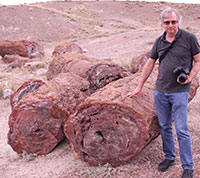 Stephen McLoughlin. Department of Palaeobiology, Swedish Museum of Natural History, P.O. Box 50007, S-104 05 Stockholm, Sweden. (Corresponding author) steve.mcloughlin@nrm.se
Stephen McLoughlin. Department of Palaeobiology, Swedish Museum of Natural History, P.O. Box 50007, S-104 05 Stockholm, Sweden. (Corresponding author) steve.mcloughlin@nrm.se
Stephen McLoughlin graduated with a PhD in geology from the University of Queensland in 1990. He has carried out postdoctoral research at the Universities of Western Australia and Melbourne, after which he was a lecturer in geology and palaeontology at the Queensland University of Technology. Since 2007, he has been a senior curator and, later, professor in palaeobotany at the Swedish Museum of Natural History, Stockholm. He works primarily on Permian to Cretaceous floras across the Southern Hemisphere. He has focused particularly on reconstructing the growth habits and palaeobiology of ancient plant groups, resolving floristic changes through mass extinction events, and documenting the record of plant-invertebrate-fungal interactions in the geological archive. He has published over 220 scientific research articles and book chapters.
![]()
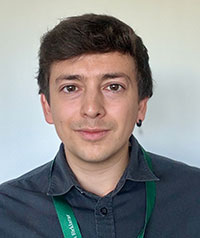 Artai Santos. Department of Palaeobiology, Swedish Museum of Natural History, P.O. Box 50007, S-104 05 Stockholm, Sweden. ArtaiAnton.SantosLopez@nrm.se, artaisl29@gmail.com
Artai Santos. Department of Palaeobiology, Swedish Museum of Natural History, P.O. Box 50007, S-104 05 Stockholm, Sweden. ArtaiAnton.SantosLopez@nrm.se, artaisl29@gmail.com
Artai A. Santos graduated in Biology and holds a MSc in biodiversity and evolution and a MEd in biology and geology teaching from the Universitat de València and Universidade de Vigo, in Spain. In 2023, he obtained his PhD in palaeobotany and palaeoecology (receiving the Extraordinary PhD Award in 2024). In 2023, he was postdoctoral researcher at UNAM (México) and is currently a postdoctoral researcher at the department of Paleobiology at the Swedish Museum of Natural History. His research focusses on plant-insect interactions in the fossil record. He is also interested in Jurassic plants and their palaeoecological implications.
![]()
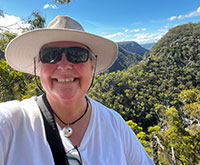 Sherri Donaldson. Palaeoscience Research Centre, University of New England, Armidale, NSW, 2351, Australia. sdonal24@myune.edu.au
Sherri Donaldson. Palaeoscience Research Centre, University of New England, Armidale, NSW, 2351, Australia. sdonal24@myune.edu.au
Sherri Donaldson is a PhD candidate in the Palaeoscience Research Centre at the University of New England, Armidale, Australia. After graduating from the University of Aberdeen with a BSC (Hons) in Geology, Petroleum Geology, in 2020, she continued with a MScR in Palaeontology and Geobiology, graduating from the University of Edinburgh in 2022. She is currently expanding her Masters research on the Cretaceous palaeoecology of the Griman Creek Formation at Lighting Ridge, focussing on using the freshwater invertebrate taxa, specifically molluscs, together with terrestrial flora to reconstruct the palaeoecology of the region.
![]()
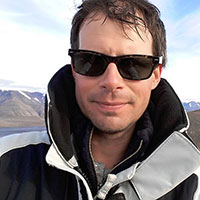 Christian Pott. LWL-Museum für Naturkunde, Westfälisches Landesmuseum mit Planetarium, Sentruper Straße 285, D-48161 Münster, Germany. Christian.Pott@lwl.org
Christian Pott. LWL-Museum für Naturkunde, Westfälisches Landesmuseum mit Planetarium, Sentruper Straße 285, D-48161 Münster, Germany. Christian.Pott@lwl.org
Christian Pott studied biology and paleobotany at the University of Münster and received his doctorate in 2007 working on Upper Triassic plant fossils of Lower Austria. After almost ten years of research at the Swedish Museum of Natural History, he became head of the palaeontology department at the LWL-Museum of Natural History in Münster in 2017, where he also works as a curator for paleobotany. His research covers the Mesozoic paleobotany and phytogeography of the Northern Hemisphere. He focusses particularly on the evolution, dispersal strategies and ecology of Bennettitales and Nilssoniales, extinct cycad-like plants that developed flower-like reproductive structures. His research has included field expeditions to Japan, China, Australia, Russia, Svalbard, the Faeroe Islands and various European countries. He has published over 90 scientific research articles and book chapters.
![]()
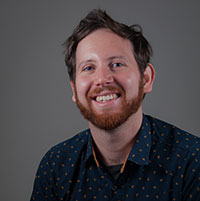 Matthew McCurry. Earth and Sustainability Science Research Centre, School of Biological, Earth and Environmental Sciences (BEES), University of New South Wales, Kensington, New South Wales 2052, Australia; Australian Museum Research Institute, 1 William Street, Sydney, New South Wales 2010, Australia. Matthew.McCurry@Australian.Museum
Matthew McCurry. Earth and Sustainability Science Research Centre, School of Biological, Earth and Environmental Sciences (BEES), University of New South Wales, Kensington, New South Wales 2052, Australia; Australian Museum Research Institute, 1 William Street, Sydney, New South Wales 2010, Australia. Matthew.McCurry@Australian.Museum
Dr Matthew McCurry is a palaeontologist and functional morphologist. His work focuses on understanding the behaviour, ecology and evolution of extinct species using the fossil record. Matthew incorporates fieldwork, descriptive palaeontology, comparative anatomy, 3D scanning and cutting-edge biomechanical simulations to discover new fossil species and gain new insights into how they once lived. He began working at the Australian Museum Research Institute and UNSW in 2017. Prior to this Matthew held fellowships at Monash University and The Smithsonian’s National Museum of Natural History. He obtained an honours degree from The University of Newcastle and a PhD from Monash University.

